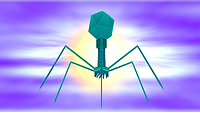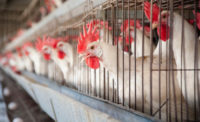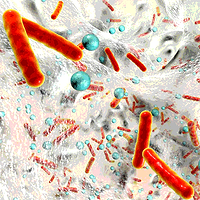Bacterial Cultures Could Mitigate Multidrug-Resistant Foodborne Pathogens

Credit: Edward Jenner (edward-jenner) via Pexels
Researchers from the University of Connecticut’s College of Agriculture, Health, and Natural Resources are exploring the potential of protective bacterial cultures to mitigate the growth of foodborne pathogens that have developed antimicrobial resistance (AMR).
The study is led by Dennis D’Amico, Associate Professor of Dairy Foods, who has been continually researching the use of protective bacterial cultures to control the growth of pathogens in food products and impede their ability to cause sickness. The present study focuses on the ability of protective culture Hafnia alvei B16 to prevent infection by two Salmonella enterica serovars—S. Typhimurium and S. Newport—as the serovars are multidrug-resistant and have been commonly implicated with foodborne illness outbreaks.
Protective cultures work because bacteria produce antimicrobial metabolites when in the presence of other, similar bacteria. When a pathogenic bacterium detects the presence of protective cultures and their metabolites, the microbe can enter a “fight or flight” mode. The pathogen can turn its focus to expressing genes important to surviving the competitor, and turn off many of the nonessential functions that cause illness, such as features needed to attach to and invade human intestinal cells.
Most of the protective cultures on the market target “Gram-positive” bacteria rather than “Gram-negative” bacteria. This distinction refers to differences in the structure of bacterial cell walls. Gram-positive protective cultures are generally most effective against Gram-positive pathogens. Therefore, there is a need for effective protective cultures against Gram-negative pathogens, such as Escherichia coli and Salmonella.
Dr. D’Amico’s previous work identified H. alvei B16 as effective in inhibiting the growth of both E. coli and Salmonella in milk. H. alvei also effectively stopped the growth of Staphylococcus aureus and prevented it from producing toxins, reducing the bacterium’s ability to cause illness.
H. alvei works differently than other protective cultures, in that most cultures produce antimicrobial metabolites that stop the growth of competing bacteria. In the study, when H. alvei’s metabolites were added to a pathogenic culture, it did not stop the pathogen’s growth as expected. However, when the entire H. alvei bacterium was in the presence of E. coli or Salmonella, pathogen growth was inhibited. Such results indicated that H. alvei was preventing the pathogen’s growth through some other mechanism.
The researchers found that pathogen growth in the presence of H. alvei decreased the expression of virulence genes in Salmonella and reduced the pathogen’s ability to subsequently invade human intestinal cells by nearly 90 percent. Additionally, when H. alvei attaches to intestinal cells, the culture does not stop Salmonella from adhering to the cells, but protects the cells from invasion.
Dr. D’Amico explained that, because Salmonella could still adhere to, but not invade intestinal cells, H. alvei could potentially have stimulated the cells to protect themselves against the invading pathogen. The phenomenon could possibly be another mechanism by which protective cultures have an effect.
Additionally, the study found differences in gene expression and how S. Typhimurium and S. Newport responded to H. alvei in milk, indicating that the effects of H. alvei are not necessarily universal for all Salmonella. For example, coculture with the protective culture in milk prevented S. Typhimurium from adhering to intestinal cells, but not S. Newport. Such differences may have an impact on the ability of this culture and other cultures to have an effect globally.
Looking for a reprint of this article?
From high-res PDFs to custom plaques, order your copy today!





